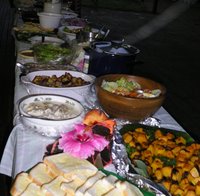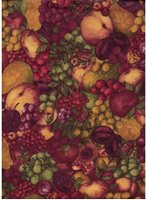At the weekend, it was my turn on the roster to clean St Barnabas' Chapel, where Bernie and I worship each Sunday.
While I was there, I took the opportunity to photograph the tiles on the floor of the Chancel and Sanctuary. These floors are made of marble that came from somewhere near Torquay in Devon, England. They have been there for 125 years.

I have to confess that there have been many occasions when I have been distracted from the sermon, and mentally planned a quilt made from this block. I even sat down and drafted the pattern once, which is quite something for me, because measuring and drafting are not my favourite activities by a long shot! I have never seen this block/tile design in a book either, but others may have.
On a number of "shopping expeditions" to the mainland (Bernie calls them "holidays"), I would look out for suitable fabrics, with a marble-like appearance, and rich earthy colours. I chose a dark cherry red for the border.
But I never made the quilt, and most of the fabrics got used for other things, or were just added to my general "stash." You see, once I had the quilt all planned and fabrics assembled, the excitement of the creative process was finished for me. The rest would have been just tedious.
I would much rather be confronted with a miscellaneous pile of fabrics and embellishments, play around with them, let them "speak" to me, and see what develops!
But there may be someone else out there who is inspired by the pattern. It is based on an octagon rather than a nine-patch. I have a feeling Kaffe Fassett could do wonderful things with it!
Here is another part of the tile floor....a great border pattern perhaps?

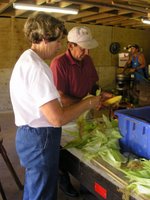





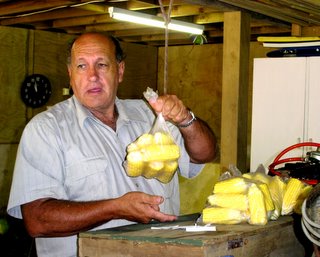



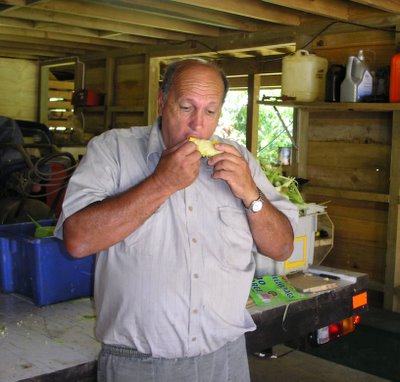























 Take your fishing boat out for a morning, gather together a few friends and rellies, heat up the oil in the cookers, bring on some bread and butter and salad, and you have a Norfolk Island Fish Fry.
Take your fishing boat out for a morning, gather together a few friends and rellies, heat up the oil in the cookers, bring on some bread and butter and salad, and you have a Norfolk Island Fish Fry.